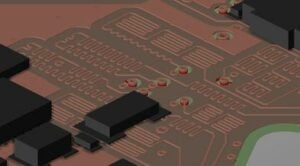 San Francisco Circuits (SFC), a provider of PCB (printed circuit board) fabrication, assembly and test services for unmanned systems and robotic platforms, has released an article explaining routing methods for PCB applications.
San Francisco Circuits (SFC), a provider of PCB (printed circuit board) fabrication, assembly and test services for unmanned systems and robotic platforms, has released an article explaining routing methods for PCB applications.
Read the full article on San Francisco Circuits’ website
Traditional wisdom in both analog and digital circuit design often states that shorter PCB traces are better. SFC’s article highlights where serpentine trace routing may be advantageous for increasing performance in certain PCB applications.
The article covers:
- Timing in digital systems
- Where noise comes from
- Why PCBs have so many voltage domains
- Why data buses have to be tuned to similar lengths
- Signal integrity and dropped packets
- Why vias should be used sparingly
- Serpentine routing in analog PCB designs
To find out more about the effects of trace widths, the importance of delay lines, and serpentine trace routing in PCB design, read the full article on San Francisco Circuits’ website.










